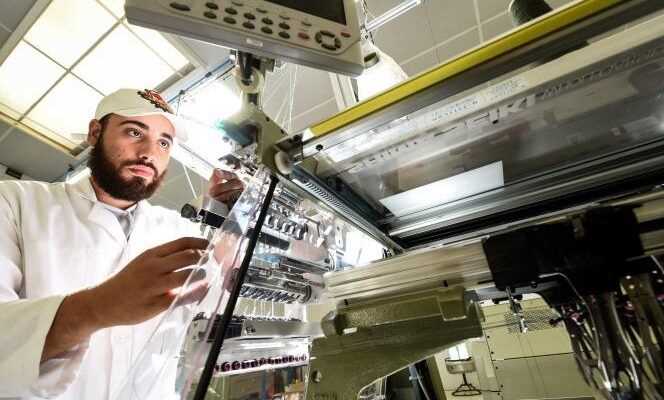Crisis ? What crisis? At the end of 2021, at the level of macroeconomic meters at least, the episode of Covid-19 will have been practically erased for the French economy. With a few sectoral nuances, activity has picked up again. Companies, boosted by support plans, create jobs on a massive scale, with the effect of reducing unemployment and supporting purchasing power.
INSEE, in its Conjoncture in France published on Wednesday 6 October, estimates the increase in gross domestic product (GDP) in the third quarter at 2.7%, after three flat first months and an increase of 1.1% over the period of April to June. With a forecast of 0.5% increase in the fourth quarter, GDP should return to its pre-crisis level by the end of the year. For the year as a whole, growth is expected to stand at 6.25%, after a recession of 8% in 2020.
Finally, the recovery is “Relatively fast”, because the origin of the shock was not economic, but health. Once this had dissipated, the economic machine was able to revive. This restart, according to INSEE, should translate into more than 500,000 net job creations in 2021, which is much more than the 300,000 lost in 2020. An unexpected and counter-intuitive consequence of the crisis, but one that s’ explains, according to Julien Pouget, head of the conjuncture department at INSEE, by the “Favorable financial conditions” from which companies benefit, boosted by support measures.
Rising purchasing power
Thanks to their plump treasuries, they recruit with all their hands, not without difficulty, moreover, in a number of sectors facing shortages of skilled labor. As a result, from the second quarter, salaried employment exceeded its pre-crisis level.
Thus, despite the return to the labor market of people who had moved away from it – for example, parents who would have stopped their professional activity to compensate for the closure of schools – the unemployment rate should fall to 7.6% in the end of the year, compared to 8% on average in the second quarter. This is the lowest rate observed since 2008, before the outbreak of the subprime crisis in the United States. At the same time, recourse to short-time work is becoming scarce and should even “Almost disappear” by the end of the year. Partial activity represented only 0.8% of hours worked in August, against 4.7% in the second quarter.
Job creation, lower unemployment, return to overtime: enough to fuel pay slips and household purchasing power, which promises to be one of the major themes of the presidential election campaign.
You have 54.41% of this article to read. The rest is for subscribers only.
